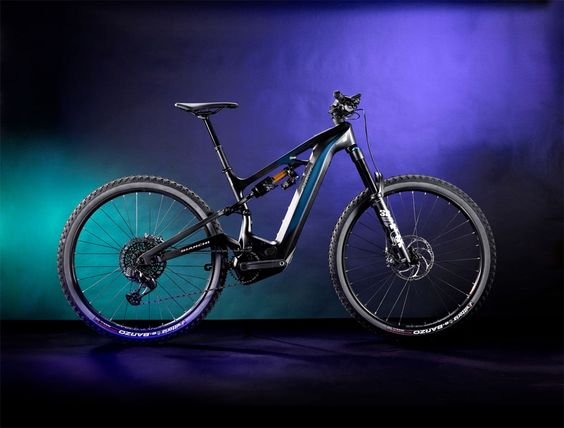
Advanced Driver Assistance Systems (ADAS) are designed to enhance vehicle safety and improve the overall driving experience. These systems use a combination of sensors, cameras, radar, and software to help drivers navigate the road, avoid collisions, and drive more comfortably. Understanding how to properly use ADAS features can help drivers take full advantage of the technology to enhance safety and convenience.
Key ADAS Features and How to Use Them
Here’s a guide to some of the most common ADAS features available in modern vehicles and instructions on how to use them effectively:
1. Adaptive Cruise Control (ACC)
What It Does: Adaptive Cruise Control automatically adjusts the vehicle’s speed to maintain a safe following distance from the car ahead. It uses sensors and radar to detect the distance and speed of the vehicle in front and can automatically accelerate or decelerate to keep a preset distance.
How to Use:
- Activate ACC: Turn on the ACC system using the designated button on the steering wheel or dashboard. Once activated, the system will prompt you to set a desired speed.
- Set Desired Speed: Use the control buttons to set your desired cruising speed. The vehicle will maintain this speed until it detects a slower-moving vehicle ahead.
- Adjust Following Distance: Most ACC systems allow you to adjust the following distance between your vehicle and the one ahead. Use the controls to set a comfortable distance based on road and traffic conditions.
- Monitor and Override When Needed: While ACC is active, keep your hands on the steering wheel and be prepared to take control if necessary, especially in heavy traffic or adverse weather conditions.
2. Lane Keeping Assist (LKA) and Lane Departure Warning (LDW)
What It Does: Lane Keeping Assist (LKA) helps keep the vehicle centered within its lane by making slight steering corrections. Lane Departure Warning (LDW) alerts the driver if the vehicle begins to drift out of its lane without signaling.
How to Use:
- Activate the System: Activate LKA or LDW using the button on the steering wheel or dashboard. Some vehicles may activate these systems automatically when the car starts.
- Use Turn Signals When Changing Lanes: The system is designed to alert or assist you when it detects unintentional lane departures. Always use your turn signals when changing lanes to prevent unnecessary warnings.
- Stay Engaged: Even with LKA active, keep your hands on the steering wheel and stay alert. These systems are designed to assist, not replace, the driver’s attention and control.
3. Blind Spot Detection (BSD) and Rear Cross-Traffic Alert (RCTA)
What It Does: Blind Spot Detection (BSD) monitors the areas to the sides of the vehicle and alerts the driver if another vehicle is in the blind spot. Rear Cross-Traffic Alert (RCTA) detects approaching vehicles from the side when reversing out of parking spaces.
How to Use:
- Check Mirrors and Activate the System: Ensure that BSD and RCTA are active (usually indicated by lights on the side mirrors or dashboard). The system will notify you with visual or audible warnings if there is a vehicle in your blind spot or when a car is approaching from the side while reversing.
- Verify Warnings: Always check your mirrors and perform shoulder checks, even if the system does not indicate a warning. These systems are designed to supplement, not replace, your awareness.
4. Automatic Emergency Braking (AEB)
What It Does: Automatic Emergency Braking (AEB) helps prevent or mitigate collisions by automatically applying the brakes if a potential collision with a vehicle, pedestrian, or obstacle is detected, and the driver does not react in time.
How to Use:
- Activate the System: AEB is usually active by default, but check your vehicle’s settings to ensure it is enabled.
- Drive Normally but Stay Alert: AEB will only intervene if it detects an imminent collision and you have not taken corrective action. It is important to remain focused on driving and be prepared to take control if necessary.
- Understand System Limitations: AEB may not function effectively in all conditions, such as during heavy rain, fog, or snow. It is essential to know your vehicle’s capabilities and limitations.
5. Traffic Sign Recognition (TSR)
What It Does: Traffic Sign Recognition uses cameras to detect road signs, such as speed limits, stop signs, and yield signs, and displays them on the dashboard or heads-up display.
How to Use:
- Activate the Feature: Ensure that Traffic Sign Recognition is enabled through the vehicle’s settings menu.
- Monitor Display for Alerts: Watch the display for updated traffic sign information. The system will show detected signs and alert you if you exceed speed limits or approach a stop sign.
- Use as a Supplementary Tool: Always pay attention to road signs yourself. The TSR system can help, but it may not detect all signs due to obstructions or poor visibility.
6. Parking Assistance Systems
What It Does: Parking Assistance Systems use sensors and cameras to assist with parking. These can include rearview cameras, front and rear parking sensors, or advanced automated parking systems that can park the vehicle for you.
How to Use:
- Activate the System: Turn on parking assistance using the designated button or screen controls. Some systems activate automatically when the vehicle is in reverse.
- Follow Guidance or Allow Automation: For systems that provide visual and auditory guidance, follow the instructions to park safely. For fully automated parking, release the steering wheel and pedals, and let the system handle the parking maneuver.
- Monitor the Surroundings: Even when using parking assistance, always check your surroundings and be ready to intervene if needed.
7. Driver Attention Monitoring
What It Does: Driver Attention Monitoring systems use cameras or sensors to detect signs of driver fatigue or distraction. If the system detects signs of inattentiveness, it will alert the driver to take a break or refocus.
How to Use:
- Enable the System: Make sure the driver attention monitoring system is enabled in your vehicle’s settings.
- Respond to Alerts: If the system alerts you to signs of fatigue or distraction, take it seriously. Consider pulling over for a break or adjusting your posture and focus.
- Stay Vigilant: Even with monitoring systems, prioritize safe driving habits, such as taking regular breaks and avoiding distractions.
8. Adaptive Headlights and Automatic High Beams
What It Does: Adaptive Headlights adjust the direction and range of the headlights based on steering input, speed, and road conditions. Automatic High Beams switch between high and low beams depending on traffic and lighting conditions.
How to Use:
- Activate the Feature: Ensure adaptive headlights and automatic high beams are enabled through the vehicle’s settings or a dedicated switch.
- Drive Normally: The system will automatically adjust the headlights to provide optimal illumination while minimizing glare for oncoming drivers.
- Manual Override When Needed: If necessary, you can manually control the headlights using the stalk or switch, especially in areas where the system might be less effective.
9. Electronic Stability Control (ESC) and Traction Control Systems (TCS)
What It Does: Electronic Stability Control (ESC) helps maintain control during skidding or loss of traction by applying brakes to individual wheels. Traction Control Systems (TCS) prevent wheel spin during acceleration on slippery surfaces.
How to Use:
- Keep Systems Active: ESC and TCS are usually always on by default. Only disable these systems if you are stuck in mud, snow, or sand and need to spin the wheels to get out.
- Maintain Smooth Driving: These systems work best when you drive smoothly and avoid sudden steering, acceleration, or braking maneuvers.
- Recognize System Activation: If you feel the vehicle automatically braking or adjusting, it may be the ESC or TCS helping to maintain control. Stay calm and allow the systems to assist.
10. Cross-Traffic Alert and Emergency Steering Assist
What It Does: Cross-Traffic Alert detects approaching vehicles from the side when reversing out of a parking spot. Emergency Steering Assist helps provide additional steering input during an emergency to avoid a collision.
How to Use:
- Activate the Features: Ensure that Cross-Traffic Alert and Emergency Steering Assist are enabled. These systems are usually active by default.
- Check Alerts: Be aware of visual and audible alerts when reversing out of a parking space. If a cross-traffic alert is triggered, wait for the approaching vehicle to pass.
- Use Steering Assist Wisely: In an emergency, remain calm and allow the Emergency Steering Assist to help guide the vehicle away from danger. Do not fight against the steering input unless necessary to avoid a collision.
Tips for Maximizing the Use of ADAS
- Understand the Features: Read the owner’s manual or consult with your dealer to fully understand the ADAS features in your vehicle, including their capabilities, limitations, and how to operate them.
- Keep Systems Calibrated: ADAS features rely on sensors and cameras that may require calibration after certain services, like tire changes or windshield replacements. Ensure that these systems are correctly calibrated to maintain their accuracy.
- Update Software Regularly: Some ADAS features may benefit from software updates. Make sure your vehicle’s software is up to date to enjoy the latest improvements and enhancements.
- Drive Responsibly: Remember that ADAS features are designed to assist, not replace, your responsibility as a driver. Always stay alert and prepared to take full control of the vehicle.
Conclusion
Advanced Driver Assistance Systems (ADAS) are transforming the driving experience, making it safer and more convenient. By understanding how to use these features effectively, drivers can enhance their safety on the road, reduce stress, and enjoy a more comfortable driving experience. Remember to stay engaged, understand each system’s limitations, and use ADAS as a supplement to, not a replacement for, responsible driving habits.







